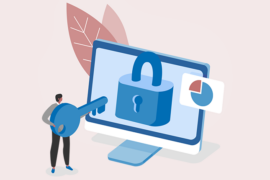In 2024, the way we use email is about to take a major turn. Gmail has introduced new rules that everyone emailing personal accounts (those ending in @gmail.com and @googlemail.com) must follow. What were once suggestions for best practices are now mandatory rules.
If you don’t follow these new guidelines, you might quickly find your emails not reaching their intended inboxes. Ignoring these rules could mean your emails are blocked or marked as spam by Gmail, which could hurt your domain’s reputation and negatively affect your business.
To make sure you’re seen as a trustworthy sender, it’s important to follow a few key steps, focus on making sure your emails actually get delivered, and improve the content of your emails.
Who needs to pay attention?
The rules start in February 2024 and apply to anyone sending emails to @gmail.com and @googlemail.com addresses, no matter the email service they use. For example, if you’re in recruitment sending lots of emails to private Gmail accounts, it’s essential you follow these new guidelines.
Gmail now separates senders into two categories:
- Group A: those sending fewer than 5,000 emails a day from their domain
- Group B: those sending 5,000 or more emails a day from their domain (Gmail calls this group bulk senders)
What are the new requirements?
For all senders:
- Implement SPF or DKIM email authentication for your sending domains. This might seem basic to some, but not everyone has done it yet.
- SPF (Sender Policy Framework) helps stop spammers from sending emails pretending to be you by specifying which IP addresses can send emails from your domain. Not setting this up could let imposters damage your reputation.
- DKIM (DomainKeys Identified Mail) adds a digital signature to your emails, acting as a seal. If the seal is broken, it means the email was tampered with during delivery.
- Use a TLS (Transport Layer Security) connection to send emails. This ensures your emails are secure while they travel across the internet. Major providers like Gmail already use TLS, but if you’re using a custom SMTP server, check if it supports TLS to keep your emails safe.
- Keep your spam complaints under 0.3% by checking them in Postmaster Tools. This means if you send 1,000 emails a day, only 3 can be marked as spam. Ideally, you want even fewer spam complaints to make sure your emails land in the main inbox. Postmaster Tools can help you track your spam rate.
For those sending over 5,000 emails a day, there’s an extra step:
- Set up DMARC for your domain. This helps you decide what to do with emails that fail SPF or DKIM checks and gives you reports on who is sending emails from your domain. Starting with a ‘none’ enforcement policy is a good way to begin with DMARC.
What happens if you don’t follow these rules?
Gmail has always focused on keeping users safe, using AI to stop over 99.9% of spam and harmful emails. By following these new rules, you help ensure your emails reach Gmail users as intended, and avoid having Gmail limit or block your emails, or mark them as spam.
Not meeting these requirements, especially not setting up SPF and DKIM, could result in your emails being marked as spam, blocked, or even rejected. Frequent spam flags can damage your domain’s reputation, harm your delivery rates, and prevent you from resolving delivery issues with Gmail in the future.
One More Thing
If you’re unsure about your domain or email address reputation and want to monitor and improve it, we’ve developed a tool that can help. This tool ensures you don’t get blocked by Google and that all your emails go to the inbox. Register for Neoleads tool here and Get Lifetime Free Access.




